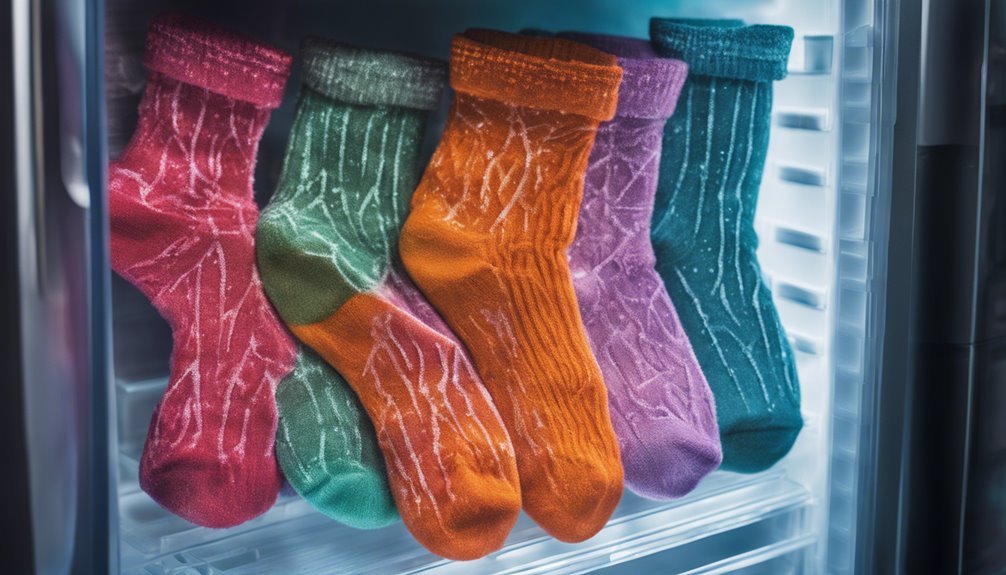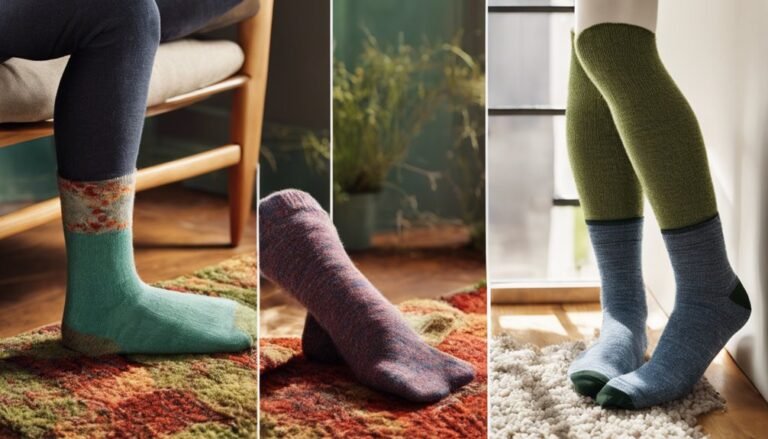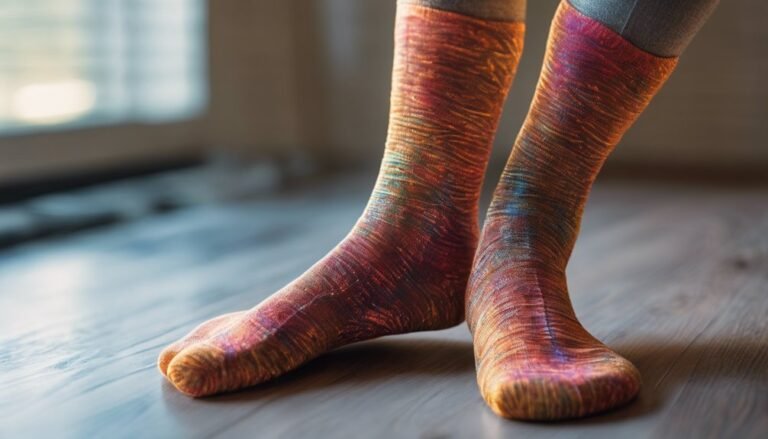Why Freezing Your Socks Might Be the Best Hack for Summer
Imagine this: It's a scorching summer afternoon, and you're desperately seeking ways to cool down. What if I told you that one of the best hacks for beating the heat involves your socks and the freezer?
This seemingly bizarre method is actually an evidence-based foot health strategy. By leveraging vasoconstriction, freezing your socks can effectively lower body temperature. This simple hack not only reduces inflammation and swelling—common summer foot ailments—but also enhances overall foot comfort.
To prepare, select breathable, moisture-wicking socks, dampen them slightly, and freeze them below -18°C. Incorporating frozen socks into your routine offers acute relief and redefines cooling methods.
Consider how other innovative cooling strategies can complement this approach for holistic thermal regulation.
Understanding the Science Behind the Cooling Effect
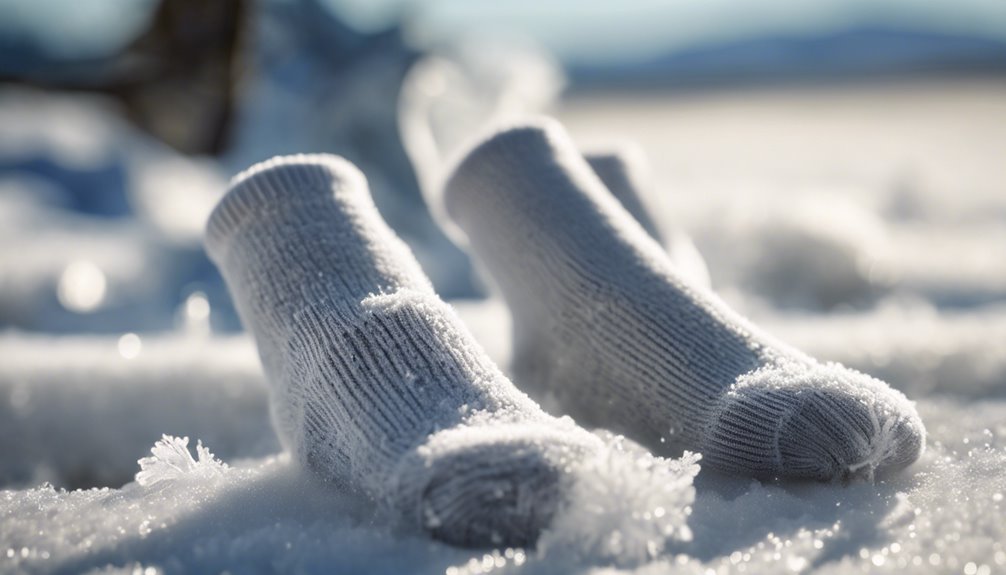
When exploring how freezing socks can provide a cooling effect, it's vital to understand the principles of thermoregulation and vasoconstriction. Your body maintains its core temperature through thermal regulation, a process that's heavily influenced by your blood circulation. When you apply frozen socks, the cold induces vasoconstriction, narrowing your blood vessels. This reduces blood flow to the feet, minimizing heat transfer and promoting a cooling sensation. As your body works to counteract the cold, it enhances thermal regulation, distributing cooler blood more effectively throughout your body. You're fundamentally giving your feet a rejuvenating break, allowing for a sense of freedom from the oppressive summer heat. By understanding these scientific principles, you'll make informed decisions about keeping cool while prioritizing foot health.
Benefits of Using Frozen Socks to Beat the Heat
Although it might sound unconventional, freezing your socks offers several scientifically backed benefits for managing heat and enhancing foot health. Cold therapy, or cryotherapy, constricts blood vessels, reducing inflammation—a common summer foot ailment. The immediate cooling effect delivers tangible summer relief, decreasing core body temperature and promoting vasoconstriction, which is beneficial for circulation.
| Socks Benefits | Summer Relief |
|---|---|
| Reduces Inflammation | Lowers Body Heat |
| Enhances Circulation | Immediate Cooling |
| Relieves Foot Pain | Promotes Vasoconstriction |
In elevated temperatures, your feet often bear the brunt of heat-related discomfort. Employing frozen socks can mitigate these effects, offering both preventative and acute relief. By embracing this low-cost, non-invasive method, you gain autonomy over thermal regulation, thereby enhancing overall comfort. This innovative approach not only cools your feet but also supports your desire for freedom from oppressive summer heat.
How to Properly Prepare and Freeze Your Socks
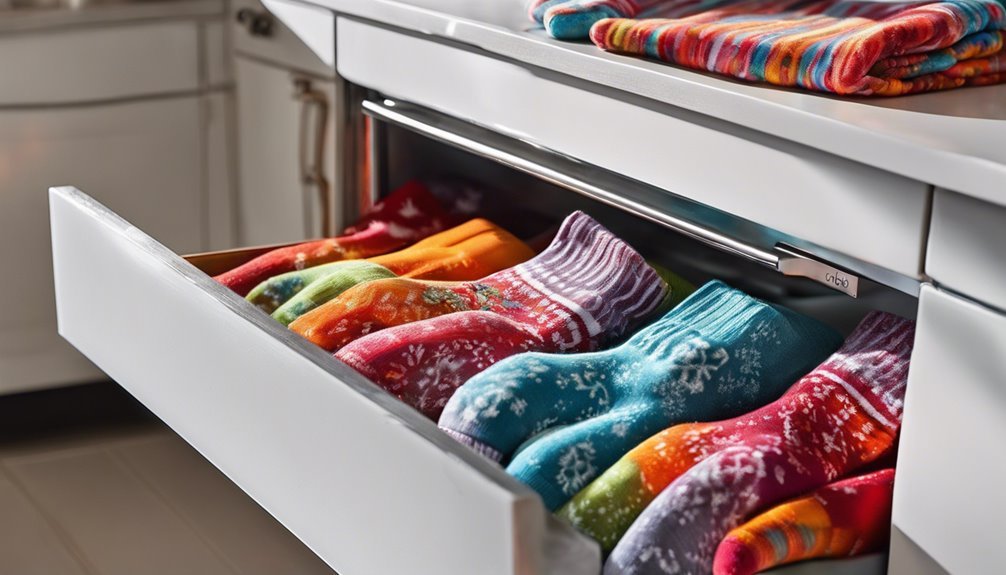
To enhance the benefits of frozen socks, proper preparation and freezing techniques are vital. Begin by selecting breathable, moisture-wicking socks, as these materials improve thermoregulation and prevent excessive perspiration. Wash the socks thoroughly to maintain hygienic standards, important for foot health. Once clean, dampen the socks slightly; this aids the freezing process without causing discomfort upon application. Lay them flat in a freezer-safe bag to prevent contamination and guarantee even freezing.
Utilize a freezer with consistent temperature regulation, ideally below -18°C (0°F), to achieve ideal cryotherapy results. This evidence-based approach can alleviate inflammation and improve overall foot comfort during warmer months. By adhering to these sock preparation and freezing techniques, you're set for a revitalizing, liberating foot experience throughout the summer.
Tips for Incorporating Frozen Socks Into Your Routine
With your socks properly prepared and frozen, you're ready to integrate this cooling technique into your routine for ideal foot health. Begin by wearing the frozen sock technique during periods of elevated temperatures, particularly when feet are susceptible to hyperhidrosis. This evidence-based approach promotes vasoconstriction, reducing swelling and enhancing summer comfort.
To optimize efficacy, consider donning frozen socks after exercise or prolonged standing. The immediate cooling effect aids in thermoregulation by decreasing skin temperature and perspiration. For those seeking freedom from traditional cooling methods, this technique offers a novel, non-invasive alternative.
Exploring Other Creative Cooling Hacks for Summer
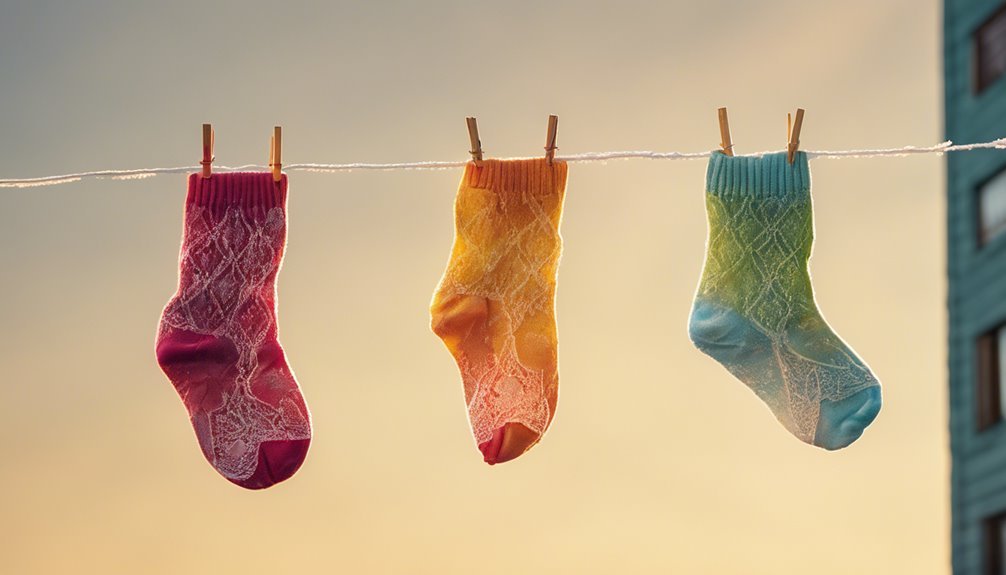
When temperatures soar, finding innovative methods to stay cool is crucial for maintaining ideal foot health. Cooling strategies not only offer relief but also promote peak circulation, reducing swelling and discomfort. To enhance your summer experience, consider these creative hacks:
- Ice packs: Apply them to pulse points for targeted cooling.
- Cool showers: Lower your body's core temperature, easing foot discomfort.
- Portable fans: Boost air circulation around your feet, offering immediate respite.
- Frozen treats: Indulge in these to lower overall body temperature and keep hydrated.
- Shade solutions: Seek natural breezes under trees or canopies to reduce heat exposure.
Incorporate hydration strategies to further enhance these methods. Embrace the freedom of cool, comfortable feet, ensuring your summer is spent with health and well-being in mind.
Frequently Asked Questions
How Long Do Frozen Socks Stay Cold After Being Worn?
You'll find frozen sock duration varies, typically offering sock cooling effectiveness for about 20-30 minutes. This short-term relief is ideal for foot health, reducing swelling and discomfort, letting you move with ease and freedom.
Can Frozen Socks Damage the Fabric or Elasticity Over Time?
When ice grips fabric in a frosty embrace, concerns arise about fabric durability and elasticity retention. Evidence suggests that constant freezing may weaken fibers over time, but occasional use maintains your sock's integrity, promoting foot health and freedom.
Are There Any Health Risks Associated With Wearing Frozen Socks?
Wearing frozen socks could potentially cause skin irritation, especially if you have sensitive skin. However, there's no substantial evidence suggesting significant health risks. Always guarantee socks aren't too cold, and monitor for any adverse foot health reactions.
What Types of Socks Are Best Suited for Freezing?
"An ounce of prevention is worth a pound of cure." Opt for cotton socks, as they're breathable and absorbent, minimizing moisture. Wool socks, though insulating, aren't ideal for freezing due to their thermal properties. Prioritize breathability for foot health.
Can Frozen Socks Be Used Alongside Other Cooling Garments?
Yes, you can combine frozen socks with other cooling accessories for enhanced thermoregulation. Complementary garments like cooling vests or scarves can synergistically reduce core temperature, promoting foot health and offering you the freedom to enjoy summer activities comfortably.

